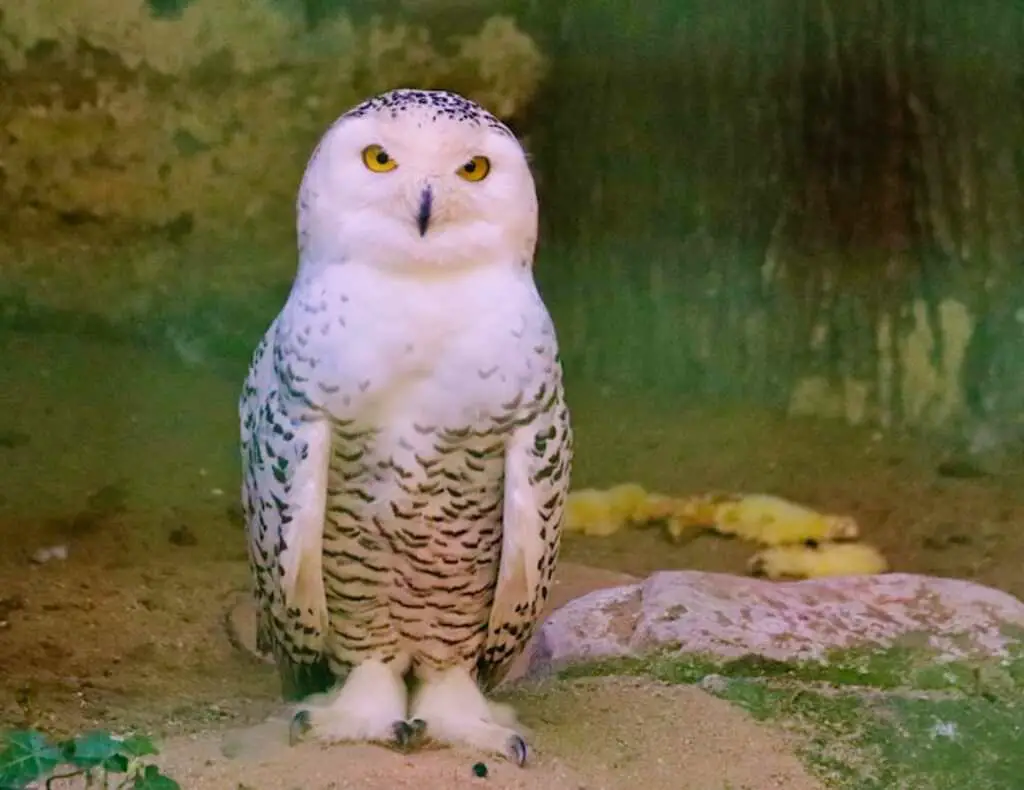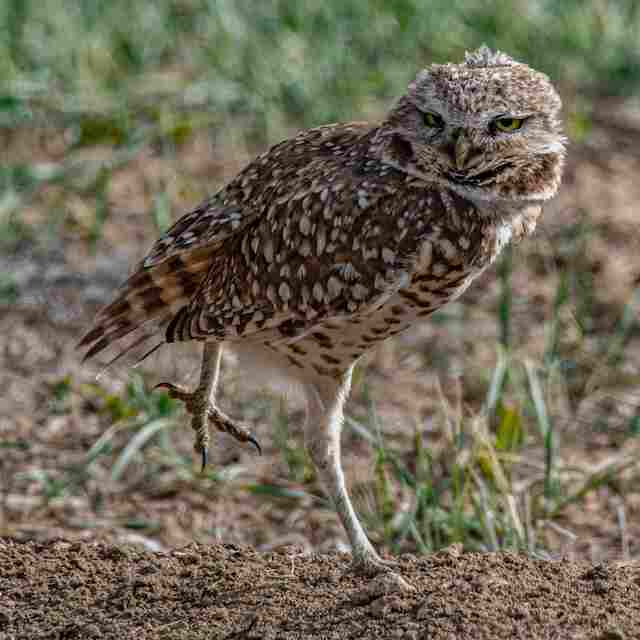Can Owls Run? That’s a question you’ve probably never thought to ask, but now that it’s on your mind, you can’t help but wonder. Are they swift-footed sprinters like cheetahs, or are they more like penguins, waddling their way through life?
Well, the short answer is yes, owls can run, but there’s much more to this story. So, let’s delve into the world of these mysterious nocturnal creatures and discover just how they get around on the ground.
Table of Contents
- 1 Anatomy of an Owl: Examining the Physical Structure of Owls
- 2 What kind of owls can run?
- 3 How do owls move when they run?
- 4 Do all owls have the same running abilities?
- 5 What are the benefits of owls running?
- 6 What kind of terrain do owls prefer to run on?
- 7 The Hunting Habits of Owls: How Does Running Fit In?
- 8 Can Owls Move Quickly? A Look at How Owls Move
- 9 The Legs of an Owl: Examining the Anatomy of an Owl’s Legs
- 10 What is the Maximum Speed an Owl Can Reach?
- 11 What Factors Affect an Owl’s Ability to Run?
- 12 What are the different types of running gaits used by owls?
- 13 Examining the Research: What Do Studies Say About Owls and Running?
- 14 FAQs About Can Owls Run
- 15 Conclusion
- 16 Resources: Where to Find More Information on Owls and Running
- 17 Author
Anatomy of an Owl: Examining the Physical Structure of Owls
Have you ever wondered what makes owls so special? They have a unique set of physical characteristics that make them unique from other birds. In this section, we’ll take a closer look at the anatomy of an owl and examine the physical structure of these fascinating creatures.
Owls have a large, round head with large eyes and a beak. They have large wings and powerful talons, which help them to fly and catch prey. They also have a unique digestive system that helps them to digest their prey more easily.
The feathers on an owl are specially adapted for silent flight and to keep them warm in cold weather. All of these features help make owls such amazing creatures.
By understanding the anatomy of an owl, we can gain a better appreciation for these wonderful animals and gain a better understanding of how they live and survive in the wild.
What kind of owls can run?
When we think of owls, many of us don’t think of them as being able to run. But, the truth is, some species of owls can actually run. In fact, some owls are quite fast runners! So, what kind of owls can run?
Well, the most common species of owls that are known to run are the Burrowing Owls and the Long-eared Owls. These owls have long legs and a unique body structure that enables them to run with relative ease.
Additionally, some species of hawk-owls, such as the Great Horned Owl and the Northern Hawk Owl, are also known to be able to run in certain cases. So, if you ever find yourself wondering, “Can owls run?”, the answer is a resounding yes!
How do owls move when they run?
Owls are known for their ability to fly, but can they really run? It may surprise some people to learn that certain species of owls do in fact have the ability to run. So, how do they do it? When owls run, they move their wings back and forth, using their feet to propel themselves forward.
This is similar to the way chickens, turkeys, and other birds run. The wings provide balance, support, and lift, while the feet and talons provide the power and thrust. When running, owls tend to keep their heads and bodies low to the ground, allowing them to move quickly and efficiently.
They also use their wings to help them maneuver, making sharp turns and sudden stops when needed. It’s an impressive sight to behold!
Do all owls have the same running abilities?
Not all owls have the same running abilities. Different species of owls have their own unique running abilities based on their physical structure and size. Smaller owls, such as the elf owl, have short legs and a small wingspan, making them less capable of running than larger owls.
However, some smaller species of owls can still manage a quick sprint if they need to catch their prey. Larger owls, such as the great horned owl, have longer legs and wingspans, making them more adept at running than their smaller counterparts.
They are also capable of running faster than smaller owls, as they are able to generate more momentum due to their size. Ultimately, the running capabilities of each species of owl depend on their size, weight, and wingspan.

What are the benefits of owls running?
When it comes to the benefits of owls running, there are plenty. Running helps owls stay fit and in shape, allowing them to hunt more effectively. It also helps them to catch prey more quickly and efficiently, as well as escape from predators.
In addition, running also helps owls stay warm in colder climates as it increases their body temperature. Running is also an efficient way for owls to travel from one place to another, and it helps them explore new areas and find food.
Finally, running can also help owls build stronger social bonds with other owls by helping them establish territory and build relationships.
What kind of terrain do owls prefer to run on?
When it comes to running, owls have preferences just like any other animal. When it comes to the terrain they prefer, owls tend to prefer flat, open surfaces such as grasslands, fields, and meadows. They’re also known to run on roads, sidewalks, and even rooftops.
While these surfaces provide a relatively easy and unobstructed surface for running, owls also like to run through wooded areas, where there are more obstacles to navigate. For example, they’ll run through the underbrush and between trees and shrubs.
In addition to that, owls have been known to run across rocky surfaces, such as small rocks and boulders, as well as sand and gravel. All of these surfaces provide challenges that owls must navigate while running, which makes them even more adept at running.
The Hunting Habits of Owls: How Does Running Fit In?
When it comes to hunting, owls have some unique adaptations that make them incredibly skilled predators. Owls use their eyesight and hearing to locate prey, but their ability to run can also be an important asset.
Running is a hunting strategy used by some species of owls, such as the short-eared owl and the northern hawk owl. These owls are able to pursue prey by running, something that other species of owls are not capable of doing.
Running can help owls reach prey that may be difficult to catch otherwise, allowing them to catch more food and avoid starvation.
By understanding the hunting habits of owls and how running fits into the equation, we can get a better understanding of the importance of running for certain species.
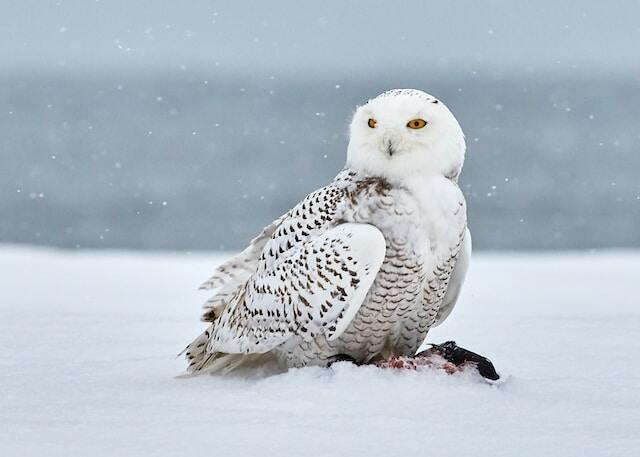
Can Owls Move Quickly? A Look at How Owls Move
When it comes to running, many of us would expect owls to be a bit slow and sluggish. However, it turns out that owls can move surprisingly quickly! Owls have a unique running gait, which helps them move faster than other birds.
Their legs are built for running rather than walking, and they have a unique joint structure that helps them move quickly. Additionally, their feathers are specially adapted for running and help them move more efficiently.
All of these features make it possible for owls to reach impressive speeds when running. So next time you see an owl, don’t be surprised if it takes off running instead of flying away!
The Legs of an Owl: Examining the Anatomy of an Owl’s Legs
Owls are fascinating creatures, and one of the most interesting things about them is their ability to run. But how do they do it? To better understand how owls can run, let’s take a closer look at the anatomy of their legs.
Owls have powerful legs that allow them to move quickly, even over difficult terrain. Their legs are covered in feathers, and they have strong tendons and muscles that help them propel themselves forward.
Their toes are also well adapted for running, with sharp claws that help them grip the ground and claws that act as brakes when they need to slow down.
Additionally, their legs are relatively short and sturdy, allowing them to maintain balance and control as they move. All of these adaptations make it possible for owls to run and hunt effectively.
What is the Maximum Speed an Owl Can Reach?
When it comes to running, owls are surprisingly swift creatures. Many species of owls are capable of reaching speeds of up to 5 to 10 miles per hour when running. This makes them about the same as the average human, who averages about 8 to 10 miles per hour.
It’s also quite impressive considering that owls usually have to make do with short legs and wings that are adapted for flying, rather than running. The fastest owl species on land is the Eurasian Eagle-Owl, which can run up to speeds of 20 miles per hour.
In addition to their speed, owls are also highly maneuverable creatures and can often reach speeds that are faster than their average running speed.
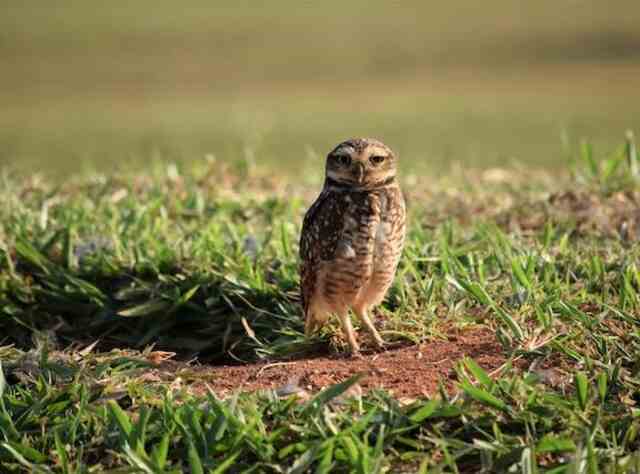
What Factors Affect an Owl’s Ability to Run?
When it comes to understanding if owls can run, it’s important to know the factors that can affect an owl’s ability to do so. Owls are strong and agile birds, but their anatomy and size can have a big impact on their running ability.
Things such as the size and shape of their legs, the type of terrain they are running on, and the amount of energy they have to expend can all play a role in whether an owl is able to run.
Additionally, different breeds of owls have different levels of running ability, with some owls being better suited for running than others.
All of these factors can have a big impact on an owl’s running ability, so it’s important to understand them in order to better understand if owls can really run.
What are the different types of running gaits used by owls?
When it comes to running, owls use a variety of gaits. The two most common gaits are the bound and the hop. In the bound, the owl will alternate between its two feet, pushing off with one foot and then landing on the other.
This alternating pattern of movement allows the owl to cover more ground with each stride. The hop is a quick, choppy stride where the owl will lift both feet off the ground at the same time and land on the same foot.
This allows the owl to quickly cover short distances. In addition to these gaits, owls may also employ a gallop or a trot, depending on the terrain and its level of agility.
Examining the Research: What Do Studies Say About Owls and Running?
When it comes to the actual science of owls and running, there have been several studies done to investigate this topic. These studies have found that owls can indeed run, but with some limitations. In general, owls are able to move faster when they are running than when they are walking or flying.
This is because their legs are designed in such a way that they can move quickly and cover longer distances. However, the speed that an owl can reach depends on the type of owl and the terrain they are running on.
Some species of owls are much faster runners than others. Additionally, owls tend to prefer flat, open terrain that is not very difficult to traverse. This allows them to achieve their maximum speed more easily. As well, owls will use different running gaits depending on the situation and their goals.
For example, an owl may switch between running with their legs and hopping with their wings in order to conserve energy and move faster. These factors all play a role in how well an owl can run.
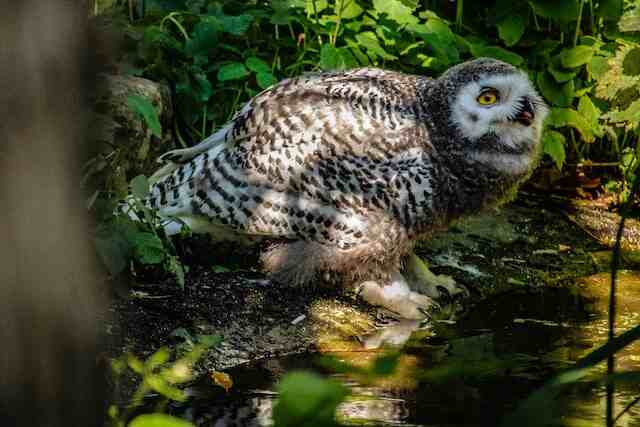
FAQs About Can Owls Run
Can owls run on the ground?
Yes, owls can run on the ground if necessary. However, they are not built for running and prefer to fly or glide to escape danger.
What is an owl’s running speed?
An owl’s running speed varies depending on the species and size of the bird. Generally, they can run between 5-15 miles per hour.
How often do owls run?
Owls do not run frequently as they have wings to fly and escape from danger. However, they may run short distances to catch prey or move from one perch to another.
Do owls run faster than they can fly?
No, owls cannot run faster than they can fly. Running is not their primary mode of transportation and is only used in certain situations.
Can owls run uphill or downhill?
Owls can run both uphill and downhill but prefer not to. They are better equipped to fly or glide and will usually opt for that method of transportation instead.
Conclusion
In conclusion, owls can indeed run, although their running capabilities vary greatly depending on the species. While some owls can reach speeds of up to 25 mph, others are limited to a walking or hopping gait.
Owls also tend to prefer certain types of terrain to run on, such as snow and grassy areas. Interestingly, owls use running as part of their hunting strategy, as they are able to move quickly and surprise their prey.
Owls must also move quickly to escape predators. Despite the variations in running speeds and other variables, owls can run, and the science behind their running is quite fascinating.
Resources: Where to Find More Information on Owls and Running
If you’re looking to learn more about owls and how they run, there are plenty of resources available to you. To start, there’s a wealth of scientific literature available, from journal articles to books.
These can provide you with in-depth information about the anatomy, physiology, and behavior of owls and their running abilities.
Additionally, there are many websites dedicated to birds and other wildlife, as well as YouTube channels that feature videos of owls running.
Finally, there are a number of organizations that are dedicated to the conservation and research of owls, which often have resources and information about the birds.
With so many resources available, you can easily find out more about the science of owls and running.
Related Post: Can Owls Move Their Eyes: The Science Behind Their Vision

